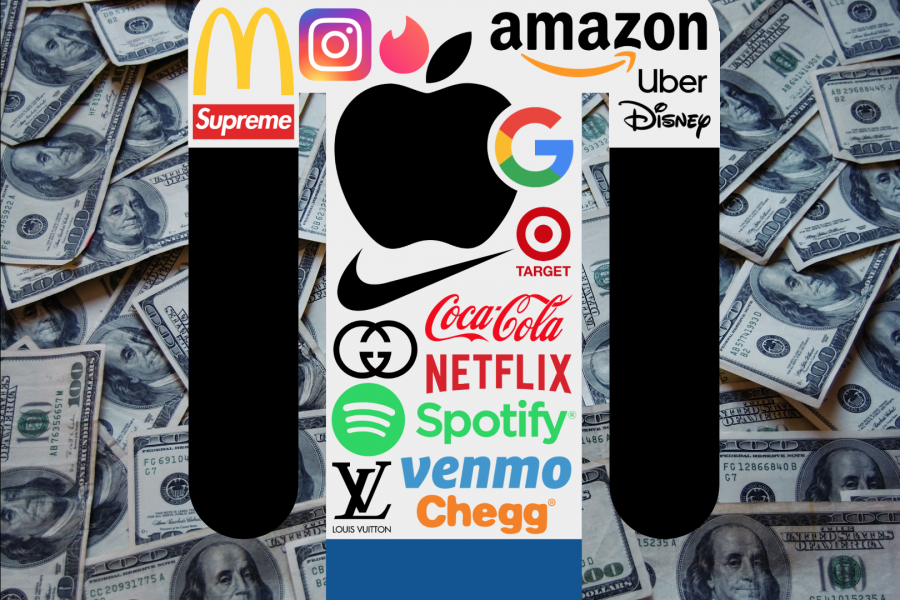You wake up and check your phone for texts and reminders. An ad for discounts pops up on your Gmail, “20% off, get it while it’s here!” Next is checking social media, where “#sponsored” is the new caption to everyone’s lives. Online “influencers” are always selling something, whether it be their flat tummy teas, clothing brands or makeup products.
Maybe you like to listen to music while you brush your teeth and get ready. Turn on Spotify, and yet again, there’s advertisements. You can always opt out of these ads, but not without a price tag. You have to pay if you want to enjoy online services without being sold something 24/7.
In that case, maybe it’d be best for you to get off social media and stop using music streaming services to avoid the headaches of advertisements. Even on the radio, ads are a consistent part of airplay. Digital marketing experts claim that Americans may see about 5,000 advertisements a day.
Something as mundane as walking to class on campus includes large posters yelling “Eat food at the Mountie Cafe, no one likes being hungry in class!” School, the one place where you go solely to learn and cultivate your passions, still needs to make money, right? Students and school-age youth are the target audience – the designated consumers.
It’s bad enough that for my generation, life as we know is online. A report from Common Sense Media states that teens spend about 7.5 hours online daily, excluding homework and school-related purposes. Almost one-third of our day is online.
Big and small businesses alike know this, and have saturated the online market so heavily that teens and young adults using social media and websites feel obligated to buy, buy, buy. That is the problem. We internalize the constant marketing whether we’re aware of it or not, and the competitive streak that results is damaging.
The fear of missing out, FOMO, is ever-present among those of us who grew up with social media. The truth is, most of us are just trying to make ends meet without the added pressure of needing newer, bigger and better things. We deserve spaces to just exist, free of corporations’ business models.
The issue with constant advertising is especially harmful to the vulnerable youth. Fresh into maybe their first jobs, they are being cornered into keeping up with the culture. Your favorite Instagram model posted her trip to Santorini, Greece, and you’re wondering why that isn’t you going on vacation. Never mind the fact that it was paid for by the beauty brand she has a partnership with and sponsors in all her posts online.
Your favorite Youtuber isn’t innocent, either. They probably have monetized content, meaning they’re compensated whether it be through ads they mention in the video or ads featured between clips. In 2018 alone, Instagram’s sponsored posts rate went up 44 percent, and in the first half of 2019 alone, their amount of sponsored posts surpassed 1.7 billion. With numbers like those, it’s hard to ignore the influx of ads social media-fueled youth see and engage with regularly.
In addition, companies realize people are annoyed by seeing ads pop up, so they’ve taken it next-level with native advertising. Native advertising is a ploy websites and brands use to promote a product; however, it looks like regular content on the site.
Take Instagram for example; companies can have sponsored posts that blend directly into your feed, and you don’t have to be following them. They’ll still show up in between your friends and family’s posts. There might be a location tag on the post that reads “sponsored,” but when scrolling through, you’d barely even notice the subtle advertising involved.
Native advertising misleads consumers on the neutrality of a company by not clearly alerting viewers or readers that they have a partnership or sponsorship with the brand they’re promoting.
It’s tempting to say “That’s just how things are,” or “This is how it is nowadays.” The problem isn’t that Youtubers, influencers and etc. are trying to make money for their content — the problem is it loses its integrity — their online presence seems less genuine.
These people have to sell their brand to companies to get views and stay relevant. It sounds fake when a local beauty blogger is raving about a new eyeshadow palette, only to find that little #ad at the end of the caption. Would they really be promoting it without the benefits?
Maybe it is just the world we live in, but that doesn’t make it right.
This culture of brand deals and advertisements is creating unrealistic expectations, contributing to a rise in anxiety for youth today. Hoards of teens and young adults are seeing their favorite internet celebrities have an apartment in downtown Los Angeles, a car, a lavish lifestyle — all while still in their 20s.
What they don’t know is how much of that lifestyle is coming from their sponsors who keep their pockets lined, especially since influencers aren’t always required to disclose their partnerships or sponsors in all situations.
So what’s the solution to this? There’s no clear cut answer, seeing as advertisements, endorsements and sponsorships are woven into so many aspects of social media and the internet.
In the big picture, the Federal Trade Commission should do everything in their power to require clear, consistent disclosure of paid content from companies, websites and social media celebrities. A good start, especially for teens, is to try and detach from social media even when it feels impossible. We can’t control the world of influencers and their ads, but we can control how we respond to it by educating ourselves on what is being sponsored.


